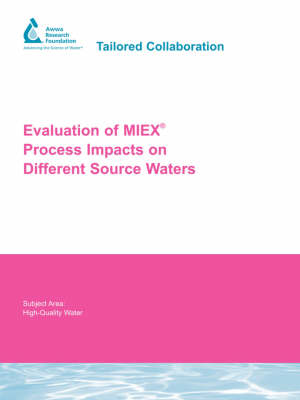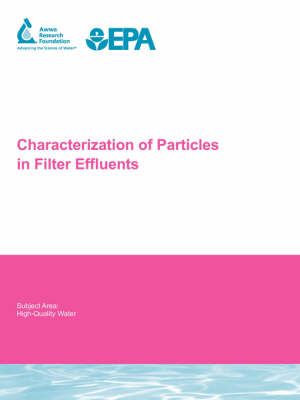Water Research Foundation Report
3 total works
Evaluation of MIEX Process Impacts on Different Source Waters
by George C. Budd, Bruce W Long, Jessica C. Edwards-Brandt, Philip C Singer, and Maria Meisch
Published 1 March 2006
Water utilities are being required to provide higher levels of disinfection while also reducing the concentrations of disinfection by-products. One new technology for meeting these goals is the MIEXTM process for removing dissolved organic carbon (DOC). This process may also work well in conjunction with coagulation by both reducing the dose of coagulant needed and by working in combination to achieve a higher level of NOM removal than is available with either process separately. The primary objectives of this project were to evaluate the MIEXTM process under different water quality conditions to demonstrate its applicability for the removal of naturally occurring matter (NOM) and for control of disinfection by-product formation. Testing was also conducted to assess removal of selected inorganic anions. Results of the full-scale operation at the Wanneroo Groundwater Treatment Plant in Western Australia (WGTP) are also discussed to develop additional guidance for planning and implementation based on actual conditions of operation.
The Formation and Decay of Disinfection By-Products in the Distribution System
by Philip C Singer
Published 31 May 2007
Most DBP studies conducted to date have focused on the formation and control of DBPs in treatment plants. They were conducted in bottles in the laboratory under controlled conditions. Little is known about the changes in DBPs in full scale distribution systems. Also, information to date suggests that batch incubations in bottles may not accurately represent the DBPs in full-scale systems because of their inability to consider pipe walls and biofilms, spatial and temporal DBP variability within a system, and the dynamic nature of the system.
Utilities were selected based on finished water characteristics, seasonal temperature changes, geographic location, type of final disinfectant, DBP concentrations, distribution system hydraulic model, and others. Two utilities used free chlorine as residual disinfectant, two utilities used chloramines, and one utility used chloramines with a yearly one-month switch to free chlorine. Within each system, sampling locations were selected based on water age, pipe material and diameter, and others. One system examined the effects of a storage reservoir and a booster chlorination station. Samples were collected six to eight times over a one-year period. In the system that periodically switches to free chlorine, two samplings were conducted before the switch, two samplings during the free chlorination period, and two samplings following the return to chloramines.
Utilities were selected based on finished water characteristics, seasonal temperature changes, geographic location, type of final disinfectant, DBP concentrations, distribution system hydraulic model, and others. Two utilities used free chlorine as residual disinfectant, two utilities used chloramines, and one utility used chloramines with a yearly one-month switch to free chlorine. Within each system, sampling locations were selected based on water age, pipe material and diameter, and others. One system examined the effects of a storage reservoir and a booster chlorination station. Samples were collected six to eight times over a one-year period. In the system that periodically switches to free chlorine, two samplings were conducted before the switch, two samplings during the free chlorination period, and two samplings following the return to chloramines.
Characterization of Particles in Filter Effluents
by J. Brandt, Helene Lecoanet, Ismail Koyuncu, M. Wiesner, S. Veerapaneni, Jessica C. Edwards-Brandt, and G. Logsdon
Published 31 August 2007
Although it has been nearly 200 years since the first known granular media filtration was used for potable water treatment, this Victorian era technology remains as perhaps the most important step in multi-barrier treatment of drinking water for the vast majority of the world. Despite this widely recognized importance of granular media filtration, we know surprisingly little about the characteristics of particles that enter and subsequently pass through these filters. The inadequacy of existing turbidimeters in detecting variations of organic and inorganic material in the submicron size groups may potentially limit the degree of optimization that can be practiced in daily operations of facilities. Material in the ultrafine fraction and its poor removal by the filters, as well as their generation within the filter media, suggests further optimization of filter operation as well as pretreatment upstream is possible and needs further investigation.
Results from this study indicate that better removal of organic material may improve performance of filters. The effect of pre-oxidation on filter performance with respect to larger particles in the effluent should be evaluated carefully by utilities.
Results from this study indicate that better removal of organic material may improve performance of filters. The effect of pre-oxidation on filter performance with respect to larger particles in the effluent should be evaluated carefully by utilities.


